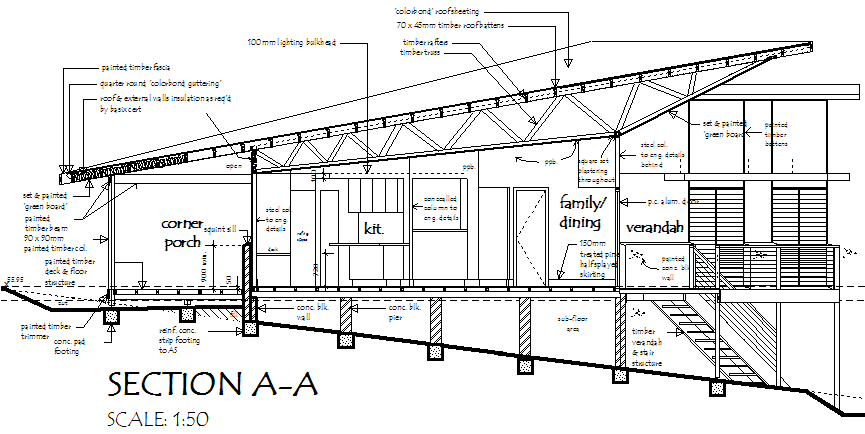Reading a builders quotation can be frustrating, leaving many people wondering what it actually includes! However there are a few essential things that you can do to greatly improve your chances of receiving a complete and easy to understand builders quote. Providing clear plans with notations and a detailed building specification is essential. Also ensure you gain three quotes from different builders, ask lots of questions during the process, and ensure that your builders are all quoting on exactly the same thing.
Providing clear plans
Working drawings/plans are the most important document when providing information to a builder or any other trade for quotation.

These documents should be easy to read and informative - with lots of dimensioning and notes provided. To learn more read our article "How to read plans".
You can also provide extra information to your builder with a comprehensive Building Specification. This document offers far more information to the person costing the job than the plans alone. Our example of a building specification has been prepared by an Architect and offers a sample of what information is included in a full specification. This Specification can also be used as a guide/checklist when organising and finalising your quotation and is a handy document to refer to throughout the construction period. A standard Specification can be purchased through your local council and provides information on Australian Standards on various building applications. This is a working and legal document that forms part of the building contract.
If you have not been through the construction process before or do not have access to a recommended builder it is best to gain three quotations or engage the services of a Quantity Surveyor. A Quantity Surveyor specialises in costing renovations and new buildings of all sizes at a set price. If you do not know whether you can afford the home you are dreaming of engaging the services of a Quantity Surveyor at the developed design stage could save you a great deal of heartache and money.
Note: Tell the person who is quoting you want their quote to be itemised.
Example
- Roofing $15,000
- Plumbing $10,000 (not including tap fittings)
- Electrical plus upgrading of power to 3 phase $15,000 (does not including light fittings)
- Stud frames and trusses $25,000 (included all bearers and joists)
Also ask the person quoting to provide a list of all items "not" included in the final cost as some things may have been left-out or are unknown such as structural or geotechnical engineering requirements.
After providing as much information as possible to your builder or quantity surveyor you should receive a well thought out quotation. Unfortunatly this does not always occur, so remember: the more questions you ask the better informed you will be. Here are a few questions that are essential in finalising your quotation:
Does the quote include:
- Fencing
- Hard landscaping (paved areas, concrete driveway)
- Soft landscaping (grass)
- Water tanks and under slab for water tank, grey water recycling
- Council fees
- Engineers fees
- Home warranty insurance
- Builder fees - the builders percentage (for project management) is usually around 10% of the construction cost
- Anything else that you assumed would be included (soft furnishings eg. curtains and blinds)
- Site preparation (land fill, demolition of an existing house, excavation)
- Services connection to mains
- Extra construction costs in high bush zoned areas
A PC allowance is usually made by the Builder/Quantity Surveyor on such things as; tiles, tap fittings, kitchen cabinets and kitchen appliances, ask if there is an allowance or not.
Quoting on the same things
During the quoting process builders may offer more cost effective or different ways of constructing your build. Ensure you don't allow any of these changes to reflect in the first stage quoting process, but make a note of these ideas for later consideration. The builders need to be quoting on exactly the same work, for you to be able to make a decision on who will be the best builder (this is first stage quoting). At the second stage you will know the first stage quote prices and will have a good idea of the builder you would prefer to work with, based on professionalism exuded during the first quoting stage.
The second stage of quoting is the time you consider cost saving ideas and changes with all three builders. The builders then go back and rework their numbers and come up with a final price. The decision to hire needs to be based upon not only price but also compatibility between the builder and yourself.
Summary
The only way to gain a comprehensive and easy to understand quotation is by providing as much information as possible and by asking lots of questions. This process can be stressful but if you ask all the right questions before and during the tendering/quotation process there will be fewer unpleasant surprises during the construction process.


